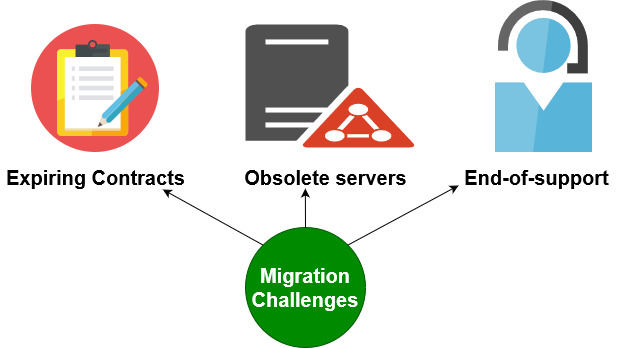Microsoft Azure – Lift & Shift Approach for Infrastructure Migration
Last Updated :
19 Apr, 2023
Migrating to the cloud can help address infrastructure challenges like expiring data center contracts, obsolete servers, and end-of-support for software.

The cloud provides support for various workloads and enables you to optimize costs, scale on demand, and keep applications secure. Whether you’re migrating or extending your infrastructure in the cloud, a lift-and-shift approach can help simplify the process by moving your applications quickly without requiring major changes to their configuration.
Using this approach to replicate and move infrastructure applications, starts with three migration phases.
Phase One:
In phase one, pre-migration, prepare your applications for a smooth migration by taking inventory of your infrastructure and assessing your on-premises environment. This helps you understand application makeup and dependencies so you can plan to move certain applications together and right-size them in the cloud to optimize performance. Be sure to also get strategic alignment with IT and business decision-makers.
Phase Two:
In phase two, during migration, replicate on-premises infrastructure applications in your cloud destination environment or landing zone. This enables your on-premises and cloud applications to run in sync, allowing you to test them in an isolated environment and verify that everything works properly before cutting over. Identify low-complexity applications first and execute in waves.
Phase Three:
Finally, in phase three, post-migration, cut over your applications to fully transition them to the cloud. From there, you can optimize your applications with built-in cloud tools and services that can help secure, manage, monitor, backup, and right-size your resources.
Using the lift-and-shift approach simplifies the infrastructure migration experience by enabling you to move your applications with minimal disruption, maintain business continuity, and take steps toward optimizing for the future.
Now let us understand How These Phases are Executed In Six Steps below as follows:
- Evaluate your existing infrastructure: Before you begin migrating, it’s important to evaluate your existing infrastructure to identify which components you want to migrate. This may include virtual machines, databases, network infrastructure, and storage.
- Assess compatibility: Next, you should assess the compatibility of your existing infrastructure with Azure. You can use tools like the Azure Site Recovery Deployment Planner to identify any compatibility issues or potential performance problems.
- Plan the migration: Once you have identified which components you want to migrate, you can plan the migration. This may include deciding which migration tools and methods to use, identifying the sequence of migration, and deciding on the timeline for the migration.
- Prepare your Azure environment: Before migrating your infrastructure, you should prepare your Azure environment by creating a virtual network, setting up a storage account, and creating any necessary network security groups.
- Migrate your infrastructure: Once your environment is ready, you can begin migrating your infrastructure to Azure. This may involve using tools like Azure Site Recovery, Azure Database Migration Service, or Azure Data Box.
- Test and validate: After the migration is complete, you should test and validate your infrastructure to ensure that it is functioning correctly in Azure. This may include testing your applications, performance testing, and security testing.
Conclusion: By using a lift and shift approach for infrastructure migration to Azure, you can quickly and easily move your existing infrastructure to the cloud without making any significant changes to your applications or infrastructure architecture. This can help you take advantage of the benefits of the cloud, including scalability, flexibility, and cost savings while minimizing disruption to your business.
Like Article
Suggest improvement
Share your thoughts in the comments
Please Login to comment...